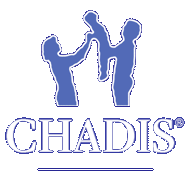21 July 2010
American Board of Pediatrics approves CHADIS to certify pediatricians for their required Maintenance of Certification (MOC-4)
June, 2010
Video for Training Pediatricians in Autism identification created with Rethink Autism group.
June, 2010
Alternative Functional Criteria for ADHD – research presented at PAS - Pediatric Academic Society Annual Meeting, Vancouver, CA.
May, 2010
SBIR research award from NIMH for ADHD QI
April, 2010
Maryland Model for Autism Screening presented at OCALI Conference, Columbus, Ohio
November 2009
Infant Mental Health Symposium and ADHD School Identification research presented at SDBP - Society for Developmental and Behavioral Pediatrics, Portland Oregon
September 2009
NIMH award for ADHD research on community intervention with economic impact
September 2009
New Release Features!
September 2009
CHADIS releases a more complete ADHD module
July 2009
Pediatrics Article reports "high degree of satisfaction with the use of a computer-assisted previsit assessment (CHADIS)"
July 2009
ADHD research using CHADIS presented at PAS - Pediatric Academic Society Annual Meeting
May, 2009
CHADIS releases new 'CHADIS 0-3' questionnaires for infant/toddler routine care and the assessment of mental health problems March 2009
NIMH, SBIR award to CHADIS to identify best methods for parent access: (phone vs. laptop vs. kiosk) and most accurate methods for early autism
January 2009
New Version of CHADIS Released
15 September 2008
CHADIS Praised at PAS Meeting
5 May 2008
CHADIS Release 10
26 April 2008
CHADIS Releases New Questionnaires
28 November 2007
13 October 2007
NICHD Grant for the Validation of CHADIS 0-3
September 2007
CHADIS Releases new Questionnaires
6 September 2007
CHADIS 8 Release Available
16 April 2007
Cisco Foundation Awards ADHD Project Linking Teachers, Pediatricians, and Parents
20 March 2007
| Latest News | ||||||||||||||||||||
CHADIS Release 8 Available Baltimore, MD: 16 April 2007 — We are pleased to announce a new version of CHADIS with some exciting new features! Some of the most important new features are listed below.
|
